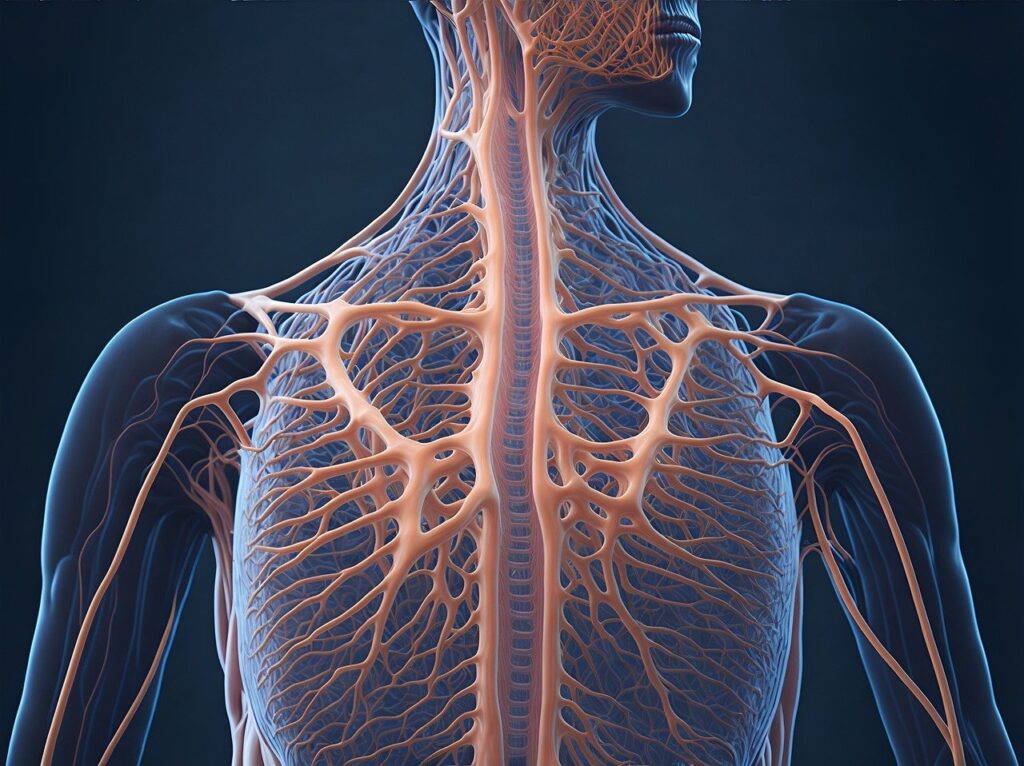
The nervous system is a complex network that controls and coordinates bodily functions. Understanding neurobiology is crucial for NEET aspirants, as it covers the structure and function of neurons, synapses, and neurotransmitters.
Structure of the Nervous System
1. Central Nervous System (CNS):
- Brain: Controls thought, memory, emotion, touch, motor skills, vision, breathing, temperature, and other regulatory processes.
- Spinal Cord: Transmits signals between the brain and the rest of the body, and coordinates reflexes.
2. Peripheral Nervous System (PNS):
- Somatic Nervous System: Controls voluntary movements and transmits sensory information to the CNS.
- Autonomic Nervous System: Regulates involuntary body functions.
- Sympathetic Division: Prepares the body for stressful or emergency situations (“fight or flight”).
- Parasympathetic Division: Conserves energy and restores the body to a resting state (“rest and digest”).
Structure and Function of Neurons
1. Neuron Anatomy:
- Cell Body (Soma): Contains the nucleus and organelles.
- Dendrites: Receive signals from other neurons and convey them to the cell body.
- Axon: Transmits signals away from the cell body to other neurons, muscles, or glands.
- Myelin Sheath: Insulates the axon and speeds up signal transmission.
- Axon Terminals: Release neurotransmitters to communicate with other cells.
2. Types of Neurons:
- Sensory Neurons: Transmit sensory information from receptors to the CNS.
- Motor Neurons: Transmit commands from the CNS to muscles and glands.
- Interneurons: Connect sensory and motor neurons within the CNS.
Neurotransmission
1. Action Potential:
- A rapid change in membrane potential that travels along the axon.
- Generated by the movement of ions (sodium and potassium) across the neuron’s membrane.
2. Synapse:
- The junction between two neurons or a neuron and a target cell.
- Synaptic Cleft: The small gap between the presynaptic and postsynaptic neurons.
3. Neurotransmitters:
- Chemical messengers released from the axon terminals.
- Common Neurotransmitters:
- Acetylcholine: Involved in muscle activation and memory.
- Dopamine: Regulates mood, reward, and motor control.
- Serotonin: Affects mood, appetite, and sleep.
- GABA (Gamma-Aminobutyric Acid): Major inhibitory neurotransmitter.
4. Signal Transmission:
- Neurotransmitters are released into the synaptic cleft and bind to receptors on the postsynaptic cell, triggering a response.
Conclusion
Understanding the nervous system and neurotransmission is essential for NEET aspirants. Mastering these concepts provides a foundation for studying more complex topics in neurobiology and medicine.
FAQs
What is the role of the myelin sheath? The myelin sheath insulates the axon and speeds up the transmission of electrical signals.
How do neurotransmitters affect the postsynaptic cell? Neurotransmitters bind to receptors on the postsynaptic cell, causing changes in its membrane potential and triggering a response.
What are the main divisions of the autonomic nervous system? The autonomic nervous system is divided into the sympathetic and parasympathetic divisions, which regulate involuntary body functions.
